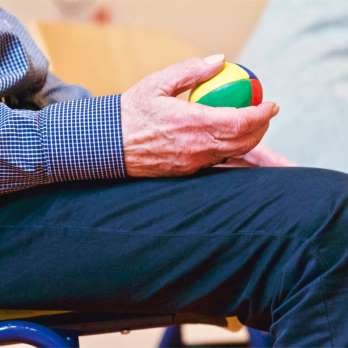Treatments for Bone-on-Bone Knee Pain in the United States in 2025
Did you know that bone-on-bone knee pain can now be managed with innovative procedures alongside physical therapy and lifestyle changes? This article explores effective options available in the United States to help you understand treatment possibilities and their benefits.

Genicular Artery Embolization (GAE)
One recent advancement in the treatment of bone-on-bone knee pain is Genicular Artery Embolization (GAE). Developed at institutions such as the University of Chicago Medicine, GAE is a minimally invasive procedure designed to reduce knee pain related to osteoarthritis inflammation. During GAE, a physician threads a small catheter—guided by X-ray imaging—into arteries surrounding the knee joint. An embolic agent is then injected to block targeted arteries, aiming to decrease inflammation and nerve irritation within the joint.
GAE may be considered for patients who have persistent knee pain from osteoarthritis, particularly when other conservative treatments have not provided adequate relief but surgery is not yet desired. Potential risks include bleeding, infection, and temporary skin discoloration. Research on long-term results and insurance coverage is ongoing, and GAE is mainly offered at specialized centers.
Physical Therapy
Physical therapy (PT) remains a foundational treatment for bone-on-bone knee pain in 2025. Customized exercise programs focus on strengthening surrounding muscles, improving joint mobility, and supporting daily function. Many patients benefit from digital PT platforms—such as those offered by Hinge Health—which provide personalized, coach-guided therapy remotely. While individual results vary, many people report reduced pain and better mobility within weeks of starting a consistent PT program.
Regenerative Injections
Regenerative medicine is gaining ground as a non-surgical approach to treating advanced knee osteoarthritis. Two main options are:
- Platelet-Rich Plasma (PRP) Injections: Platelets are concentrated from the patient’s blood and injected into the knee. The growth factors released by these platelets may help reduce inflammation and promote tissue repair. PRP therapy is most effective in early to moderate cases, but some patients with advanced arthritis may experience relief as well.
- Stem Cell Therapy: Stem cells harvested from the patient’s bone marrow are injected into the knee joint and surrounding areas. Potential benefits may include decreased pain, improved mobility, and possible slowing of cartilage deterioration, but robust scientific evidence is still evolving.
Patients interested in these options should consult a qualified healthcare provider to discuss suitability, expected outcomes, and access, as these treatments may not be widely available or covered by insurance.
Diet and Hydration
A supportive diet and proper hydration can complement medical treatments:
- Eating foods rich in antioxidants (like berries, leafy greens, and nuts) and omega-3 fatty acids (such as salmon, flaxseed, and walnuts) may help reduce joint inflammation and swelling.
- Limiting processed foods, added sugars, and refined carbohydrates may further decrease inflammation.
- Staying well-hydrated (roughly half your body weight in ounces of water daily) is important for joint lubrication and overall joint health.
Medications and Steroid Injections
Traditional treatments, including nonsteroidal anti-inflammatory drugs (NSAIDs) and corticosteroid (steroid) injections, are still used for managing bone-on-bone knee pain:
- NSAIDs can provide short-term pain and inflammation relief.
- Corticosteroid injections may offer temporary reduction in pain and swelling but are limited due to potential side effects with repeated use.
These treatments are often combined with other conservative approaches for comprehensive pain management.
Total Knee Replacement Surgery
For those with severe bone-on-bone pain who do not respond to other treatments, total knee replacement surgery remains an effective and established option. This surgery replaces the damaged joint surfaces with artificial components and can lead to significant pain relief and restored mobility.
Next Steps and Practical Guidance
People living with bone-on-bone knee pain in the United States should consider consulting a multidisciplinary healthcare team—including orthopedic surgeons, interventional radiologists, and physical therapists—to:
- Receive a comprehensive assessment
- Develop a personalized treatment plan
- Discuss the risks, benefits, and availability of newer and traditional therapies
Starting with conservative options like physical therapy and dietary improvements is often recommended, while exploring advanced procedures if necessary.
Summary
Treatments for bone-on-bone knee pain in the United States in 2025 range from minimally invasive procedures like Genicular Artery Embolization and regenerative injections to evidence-based physical therapy and lifestyle changes. Total knee replacement remains an important solution for those with severe disease. An integrated, personalized approach can help manage pain, improve function, and support overall joint health.
Sources
- University of Chicago Medicine – Genicular Artery Embolization for Knee Osteoarthritis
- Hinge Health – Bone-on-Bone Knee Pain Treatments
- Integrative Rehab Medicine – Proven Treatments for Knee Arthritis
Disclaimer: All content, including text, graphics, images and information, contained on or available through this web site is for general information purposes only. The information and materials contained in these pages and the terms, conditions and descriptions that appear, are subject to change without notice.
